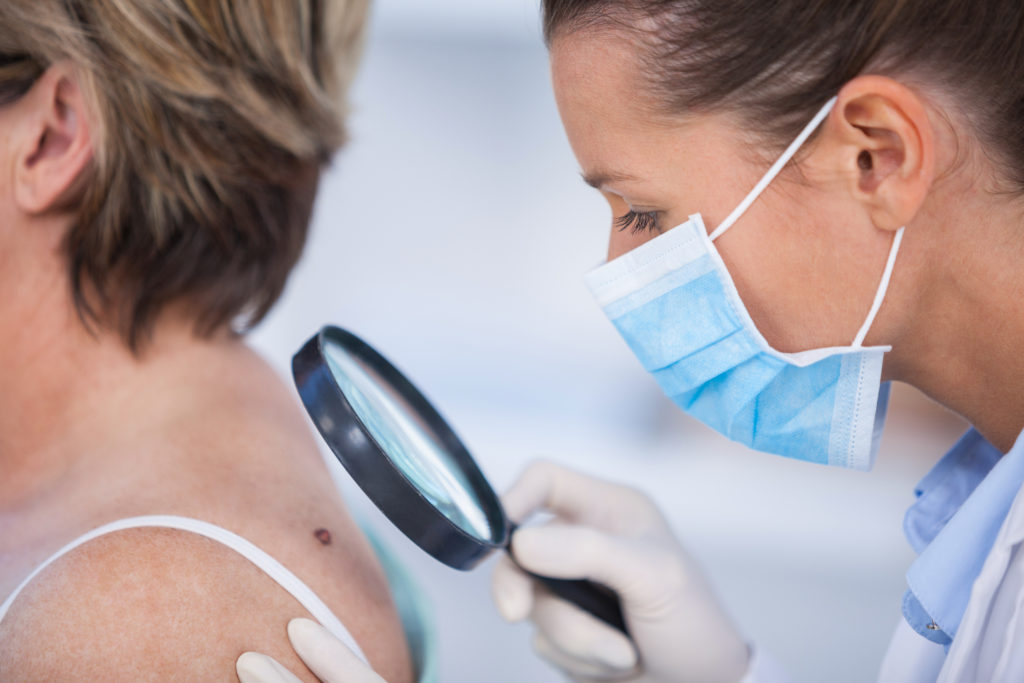Skin cancer is an escalating public health concern that demands greater attention and understanding. As the most common form of cancer globally, its incidence continues to rise, driven by a combination of environmental factors, lifestyle choices, and an ageing population. The consequences of skin cancer are far-reaching, affecting individuals, families, and healthcare systems. Despite advances in treatment, the best defence remains early detection and proactive prevention.

One of the most insidious aspects of skin cancer is its ability to develop silently over time. Often, the damage begins years before any visible signs appear. Prolonged exposure to ultraviolet (UV) radiation, whether from the sun or artificial sources like tanning beds, plays a pivotal role in the development of skin cancer. UV radiation causes mutations in the DNA of skin cells, leading to abnormal growth and, eventually, malignant tumours. This process can take decades, with individuals often unaware of the harm being done until the cancer has progressed.
There are three primary types of skin cancer: basal cell carcinoma, squamous cell carcinoma, and melanoma. Basal cell carcinoma, the most common, tends to grow slowly and rarely spreads to other parts of the body. However, if left untreated, it can cause significant disfigurement by invading surrounding tissues. Squamous cell carcinoma, although more likely to spread than basal cell carcinoma, is still highly treatable when caught early. The most dangerous of the three is melanoma. This aggressive cancer can spread rapidly to other organs, making it particularly deadly if not diagnosed and treated in its early stages.
The impact of skin cancer is not limited to physical health. The emotional and psychological toll on patients and their loved ones can be profound. The visible effects of skin cancer and its treatment can lead to issues of self-esteem and body image, particularly in cases where significant surgery or ongoing medical care is required. Additionally, the fear of recurrence or the need for regular check-ups can cause long-term anxiety, affecting an individual’s quality of life.
From a healthcare perspective, the increasing incidence of skin cancer presents a significant burden. The cost of treating skin cancer, particularly in advanced stages, is considerable, both in terms of financial resources and healthcare capacity. Early detection programmes and public education campaigns are essential in reducing the prevalence and impact of skin cancer, yet these efforts require sustained investment and support from governments and healthcare organisations.
One of the most concerning trends in skin cancer is its growing incidence among younger people. Historically, skin cancer was more commonly associated with older individuals, who had accumulated more sun exposure over their lifetimes. However, in recent years, there has been a worrying increase in cases among those in their twenties and thirties. This shift is largely attributed to lifestyle changes, such as the popularity of sunbathing and the use of tanning beds. The desire for a tanned appearance, often viewed as a symbol of health and vitality, ironically increases the risk of skin cancer, with potentially devastating consequences.
The serious consequences of skin cancer cannot be overstated. In addition to the potential for disfigurement, skin cancer can be fatal, particularly in the case of melanoma. Despite advancements in treatment, survival rates decrease significantly once the cancer has spread beyond the skin. The emotional and financial burden on patients and their families can be immense, and the loss of life due to a largely preventable disease is a tragic outcome.
Public awareness and education are crucial in combating the rise of skin cancer. Individuals must be encouraged to take proactive steps to protect their skin, such as wearing protective clothing, using sunscreen with a high SPF, and avoiding excessive sun exposure, especially during peak hours. Regular skin checks, both self-examinations and professional screenings, are vital in detecting skin cancer early, when it is most treatable.
In the fight against skin cancer, technology and research have become invaluable allies. Advances in medical technology have revolutionised the ways in which skin cancer is detected, diagnosed, and treated, offering new hope to those at risk or affected by the disease. At the same time, ongoing research is deepening our understanding of skin cancer, paving the way for more effective prevention strategies and treatments.
One of the most significant technological developments in recent years has been the advent of dermoscopy, a non-invasive diagnostic tool that allows dermatologists to examine skin lesions in greater detail. Dermoscopy uses a specialised magnifying lens and a light source to reveal structures within the skin that are not visible to the naked eye, aiding in the early detection of skin cancer. This technology has greatly improved the accuracy of diagnosing melanoma and other skin cancers, allowing for earlier and more effective intervention.
In addition to dermoscopy, the use of artificial intelligence (AI) in dermatology is rapidly gaining momentum. AI algorithms, trained on vast datasets of skin images, are being developed to assist in the detection and classification of skin lesions. These systems can analyse images of moles and other skin abnormalities with remarkable accuracy, often matching or even surpassing the diagnostic abilities of experienced dermatologists. While AI is not yet a replacement for human expertise, it holds great promise as a tool for enhancing early detection, particularly in regions where access to dermatologists is limited.
Another area where technology is making a significant impact is in the treatment of skin cancer. Traditional treatments such as surgery, radiation therapy, and chemotherapy remain important, but newer, more targeted approaches are offering additional options. For example, immunotherapy, which harnesses the body’s immune system to fight cancer, has shown great promise in treating advanced melanoma. Similarly, targeted therapies that focus on specific genetic mutations within cancer cells are providing more personalised treatment options, improving outcomes for patients with certain types of skin cancer.
Photodynamic therapy (PDT) is another innovative treatment that has gained traction in recent years. PDT involves applying a photosensitising agent to the skin, which is then activated by a specific wavelength of light. This process destroys cancerous cells while sparing healthy tissue, making it a less invasive option for treating certain types of skin cancer, such as basal cell carcinoma. PDT is particularly useful for treating lesions in cosmetically sensitive areas, where preserving the appearance of the skin is a priority.
Despite these advances, the key to reducing the burden of skin cancer lies in prevention. Research continues to underscore the importance of sun protection in preventing skin cancer. Scientists have identified several genetic and environmental risk factors that contribute to the development of skin cancer, but UV radiation remains the most significant. Public health campaigns must continue to emphasise the dangers of UV exposure and the importance of protective measures.
In addition to public awareness, research is also focusing on developing more effective sunscreens and protective clothing. Advances in materials science have led to the creation of fabrics that provide better UV protection without sacrificing comfort or style. At the same time, researchers are working on next-generation sunscreens that offer broader protection against both UVA and UVB rays, with longer-lasting formulas that are easier to apply and less harmful to the environment.
Moreover, there is growing interest in the role of genetics in skin cancer susceptibility. Studies have identified specific genetic mutations that increase an individual’s risk of developing melanoma and other skin cancers. As our understanding of these genetic factors improves, it may become possible to develop personalised prevention strategies based on an individual’s genetic profile. For example, those with a higher genetic risk could be advised to undergo more frequent skin screenings or take additional precautions to protect their skin from UV exposure.
While the progress in skin cancer research and treatment is encouraging, there is still much work to be done. The rising incidence of skin cancer, particularly among young people, underscores the need for continued investment in research and public health initiatives. Governments, healthcare providers, and individuals all have a role to play in addressing this growing threat.
Governments must continue to support research into new prevention and treatment methods, while also implementing policies that discourage harmful behaviours, such as the use of tanning beds. Healthcare providers need to prioritise skin cancer education and screening, ensuring that patients are informed about the risks and the steps they can take to protect themselves. For individuals, the message is clear: taking care of your skin today can prevent serious health issues tomorrow.
Final Thoughts…
The dangers of skin cancer are clear, and its growth is a serious concern that requires a concerted effort to address. While advances in technology and research are providing new tools to combat the disease, the most effective strategy remains prevention. By continuing to raise awareness, support research, and encourage healthy behaviours, we can work together to reduce the impact of skin cancer and protect future generations from its devastating consequences. The fight against skin cancer is far from over, but with continued vigilance and innovation, we can make significant strides in turning the tide against this pervasive disease.





